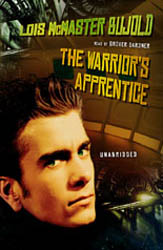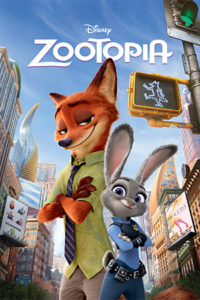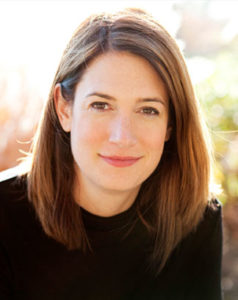Writing fiction is, at root, an exercise in attempting to expose some deeper truth about life through a filter of things that never happened, people who never lived, and, sometimes, non-existent places. It is a common joke for fiction authors to say they “lie for a living.” (Well, in my case it would be a lie to say I make a living at it, at least so far, but that’s another story…)
But it is important, especially for new authors, to understand that even within the web of “lies” that an author is spinning into a story, it is generally critically important for the author to never lie to their reader.
Wait, how can I “not lie” if my entire story is a “lie” in the first place?
There is an unspoken contract between the person who is telling the story, and the person who is reading the story. That contract goes something like this: “I know this story is all made up out of whole cloth, but I am still willing to read it, with the expectation that the story will be internally consistent, and that within the context of the story itself, the author will not rely on duplicity to deceive me into believing one thing, only to learn that something else is the case.”
While the story itself is a “lie,” if the author breaks that trust in order to create what they consider to be a “twist,” then the reader will view that not as a mere “lie,” instead that will be seen as a “damn lie” and once a reader encounters a “damn lie” in a story, they may never trust that author again.
Today, aspiring authors are frequently told that their story must have a “twist,” or something unexpected and potentially shocking to the reader. Of course, the easiest way to do that, is to spend the entire story making you believe one thing, only to contradict that thing at the end just to create a “gotcha” moment for the author.
I won’t lie, I hate books that do that.
“But wait!” you might be saying. “Isn’t deceiving the reader the entire point for certain stories?”
In a sense that’s true. But usually those stories aren’t about lying to the reader, they are about creating an impression by allowing readers to make certain assumptions, and then (sometimes, gently, sometimes abruptly) guiding the reader to realize, at some point, that their assumptions were wrong.
But, at that point the reader must be able to smack themselves in the head and say: “Oh, yeah! I get it now, the clues were there all along, and I just didn’t put them together.” Because if they don’t, their reaction will be more like “What the frack!? What the heck is this?”
The clues being there all along, and the reader finally putting them together, is the heart of story telling. That’s why story telling is not a one-way activity. For a good book to really reach and speak to a reader, that reader must put some effort into reading it, figuring out what the author is doing, and putting it all together at the end. And no reader wants to put that effort into something, only to discover that the author just broke the unspoken covenant, just for a quick “gotcha.”





 In the first half of Gillian Flynn’s bestseller Gone Girl, I was amazed. Flynn’s ability to communicate small issues in a marriage, how they can appear and fester just under the surface, was revelatory to me. I sure didn’t pick up Gone Girl expecting such an accurate and subtle commentary on American marriage and the differences between blue-collar and white-collar partner philosophies.
In the first half of Gillian Flynn’s bestseller Gone Girl, I was amazed. Flynn’s ability to communicate small issues in a marriage, how they can appear and fester just under the surface, was revelatory to me. I sure didn’t pick up Gone Girl expecting such an accurate and subtle commentary on American marriage and the differences between blue-collar and white-collar partner philosophies. Similarly, in Flynn’s novella The Grownup, the reader is presented with an anti-hero that, at first blush, seems honest and straight forward about who she is: a fake psychic. I’ll not mention her former job so you’re surprised when you read the short story yourself (I’ll just say this: the first two lines of the story are some of the best opening lines I’ve ever read. Talk about a hook! Winky wink). Now, as we, the readers, follow this opportunistic woman, we fall into a haunted house/evil stepson-type scenario. Nothing too surprising here – they are common horror movie tropes. And our protagonist, although a con artist of sorts, still has some admirable attributes, and it’s easy to slip into the story from her perspective. We’re even on her side. (Big spoiler here, so skip to the next paragraph if you want to read this story.) We’re on her side, that is, until we realize too late that she’s not an anti-hero – she’s the villain, and became so under our very noses. And this is Flynn’s trademark. Unreliable narrators to an extreme. Characters that seem like unreliable narrators and anti-heroes who become the villains before the reader can put two and two together.
Similarly, in Flynn’s novella The Grownup, the reader is presented with an anti-hero that, at first blush, seems honest and straight forward about who she is: a fake psychic. I’ll not mention her former job so you’re surprised when you read the short story yourself (I’ll just say this: the first two lines of the story are some of the best opening lines I’ve ever read. Talk about a hook! Winky wink). Now, as we, the readers, follow this opportunistic woman, we fall into a haunted house/evil stepson-type scenario. Nothing too surprising here – they are common horror movie tropes. And our protagonist, although a con artist of sorts, still has some admirable attributes, and it’s easy to slip into the story from her perspective. We’re even on her side. (Big spoiler here, so skip to the next paragraph if you want to read this story.) We’re on her side, that is, until we realize too late that she’s not an anti-hero – she’s the villain, and became so under our very noses. And this is Flynn’s trademark. Unreliable narrators to an extreme. Characters that seem like unreliable narrators and anti-heroes who become the villains before the reader can put two and two together.